.
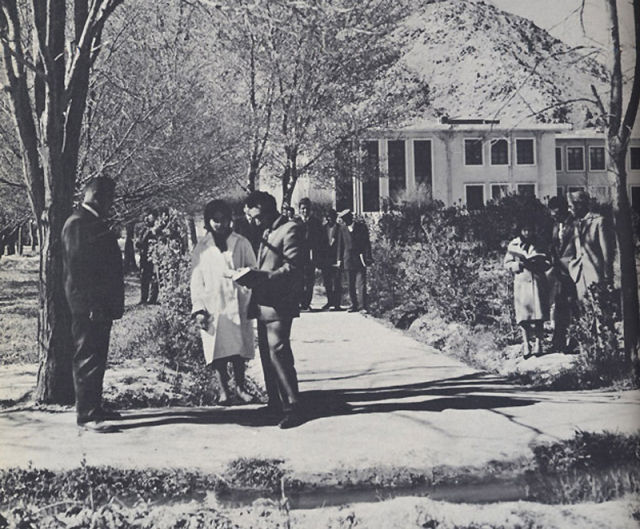
"Biology class, Kabul University."
In the 1950s and '60s, women were able to pursue professional careers in fields such as medicine. Today, schools that educate women are a target for violence, even more so than five or six years ago.
In the 1950s and '60s, women were able to pursue professional careers in fields such as medicine. Today, schools that educate women are a target for violence, even more so than five or six years ago.

"Student nurses at Maternity Hospital, Kabul."
When I was growing up, education was valued and viewed as the great equalizer. If you went to school and achieved good grades, you'd have the chance to enter college, maybe study abroad, be part of the middle class, and enjoy a comfortable lifestyle. Education was a hallowed value. Today, I think people have become far more cynical. They do not see the link between education and a better life; they see instead that those who have accumulated wealth and power have not done so through legitimate means.
When I was growing up, education was valued and viewed as the great equalizer. If you went to school and achieved good grades, you'd have the chance to enter college, maybe study abroad, be part of the middle class, and enjoy a comfortable lifestyle. Education was a hallowed value. Today, I think people have become far more cynical. They do not see the link between education and a better life; they see instead that those who have accumulated wealth and power have not done so through legitimate means.
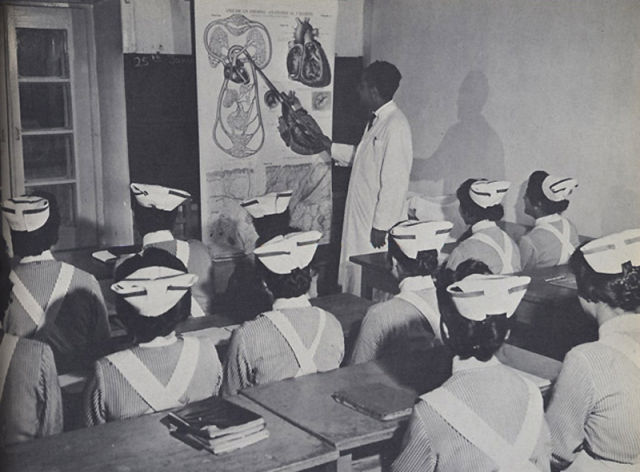
"Most hospitals give extensive post-natal care to young mothers."
This infant ward in a Kabul hospital in the 1960s contrasts sharply with one I visited in 2004 in Mazar-e-Sharif. There I found two babies born prematurely sharing the same incubator. That hospital, like many in Afghanistan today, did not have enough equipment.
This infant ward in a Kabul hospital in the 1960s contrasts sharply with one I visited in 2004 in Mazar-e-Sharif. There I found two babies born prematurely sharing the same incubator. That hospital, like many in Afghanistan today, did not have enough equipment.
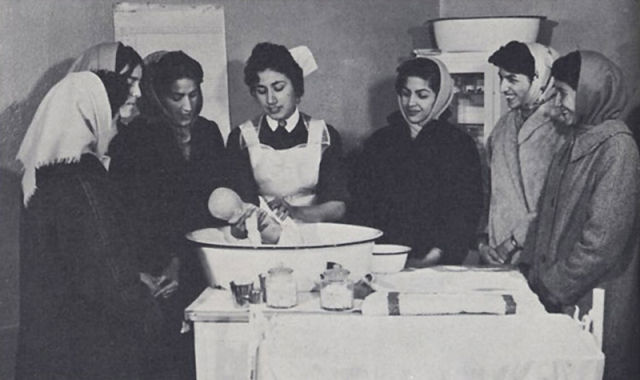
"Infant ward at feeding time."
In the 1960s, about half of Afghanistan's people had access to some level of medical care; now a much smaller percentage do. Today's hospitals are crowded, the facilities limited; nearly one in four babies born in Afghanistan today does not reach its fifth birthday.
In the 1960s, about half of Afghanistan's people had access to some level of medical care; now a much smaller percentage do. Today's hospitals are crowded, the facilities limited; nearly one in four babies born in Afghanistan today does not reach its fifth birthday.
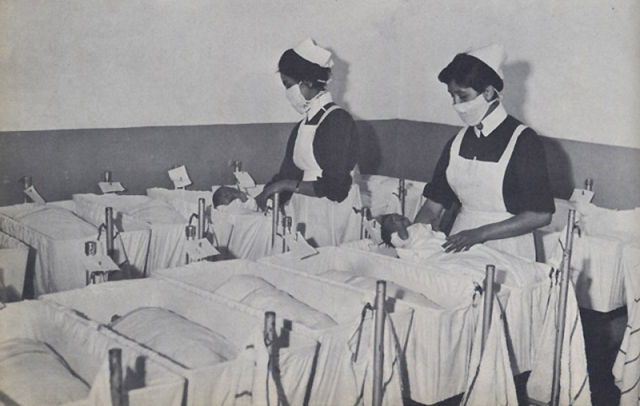
"A laboratory at the Vaccine Research Center."
Above is a vaccine research center attached to a Kabul hospital in the 1960s. Today, medical care across the country is limited by several factors, including lack of electricity. Less than 20 percent of Afghans have access to electricity; many homes are lit by kerosene lamps, with only fans running to combat the heat.
Above is a vaccine research center attached to a Kabul hospital in the 1960s. Today, medical care across the country is limited by several factors, including lack of electricity. Less than 20 percent of Afghans have access to electricity; many homes are lit by kerosene lamps, with only fans running to combat the heat.
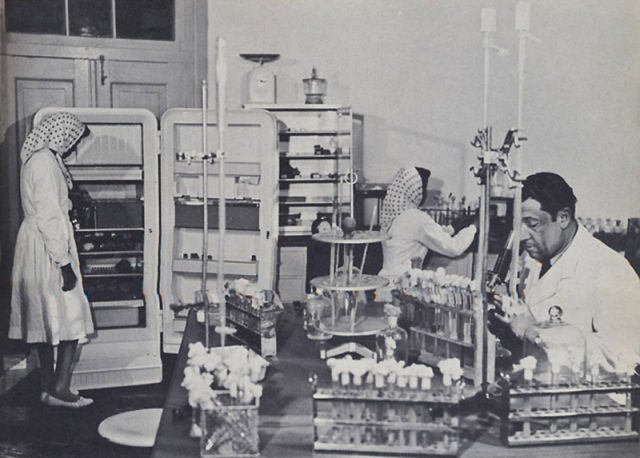
"A villager welcomes visiting nurses to his compound."
The central government of Afghanistan once oversaw various rural development programs, including one, pictured here, that sent nurses in jeeps to remote villages to inoculate residents from such diseases as cholera. Now, security concerns alone make such an effort nearly impossible. Government nurses, as well as U.N. and NGO medical workers, are regular targets for insurgent groups that merely want to create disorder and terror in society.
The central government of Afghanistan once oversaw various rural development programs, including one, pictured here, that sent nurses in jeeps to remote villages to inoculate residents from such diseases as cholera. Now, security concerns alone make such an effort nearly impossible. Government nurses, as well as U.N. and NGO medical workers, are regular targets for insurgent groups that merely want to create disorder and terror in society.
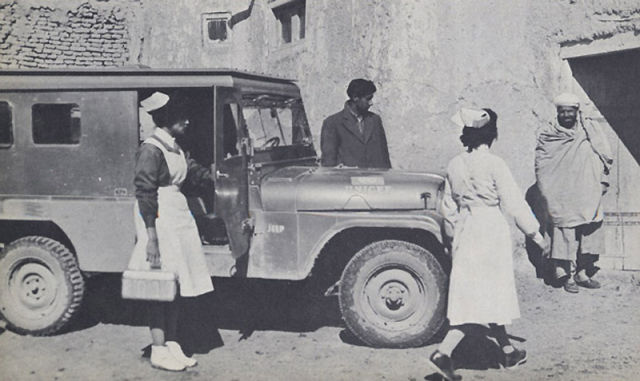
"Hundreds of Afghan youngsters take active part in Scout programs."
Afghanistan once had Boy Scouts and Girl Scouts. In the 1950s and '60s, such programs were very similar to their counterparts in the United States, with students in elementary and middle schools learning about nature trails, camping, and public safety. But scouting troops disappeared entirely after the Soviet invasions in the late 1970s.
Afghanistan once had Boy Scouts and Girl Scouts. In the 1950s and '60s, such programs were very similar to their counterparts in the United States, with students in elementary and middle schools learning about nature trails, camping, and public safety. But scouting troops disappeared entirely after the Soviet invasions in the late 1970s.

"Park Cinema, like many others, provides the needed entertainment."
This movie theater was located near where I once lived, and we could even see Hollywood movies there. (I remember seeing Spartacus, The FBI Story, and The Dirty Dozen.)
This movie theater was located near where I once lived, and we could even see Hollywood movies there. (I remember seeing Spartacus, The FBI Story, and The Dirty Dozen.)

"Mothers and children at a city playground."
I also remember a playground a few hundred yards away from the theater, where mothers used to take their children to play. Now, only men loiter in the city parks; it is unsafe to bring children outside.
I also remember a playground a few hundred yards away from the theater, where mothers used to take their children to play. Now, only men loiter in the city parks; it is unsafe to bring children outside.
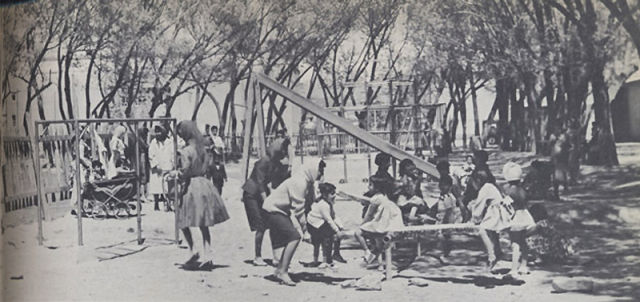
"Skilled workers like these press operators are building new standards for themselves and their country."
Light and medium industry, like this metal shop in the Kabul suburbs, once held great promise for Afghanistan's economy. But today, how could you run such an operation without ample electricity? Now there are only small shops, people who work at home -- no major industrial centers. Currently, Afghanistan's chief export is opium.
Light and medium industry, like this metal shop in the Kabul suburbs, once held great promise for Afghanistan's economy. But today, how could you run such an operation without ample electricity? Now there are only small shops, people who work at home -- no major industrial centers. Currently, Afghanistan's chief export is opium.
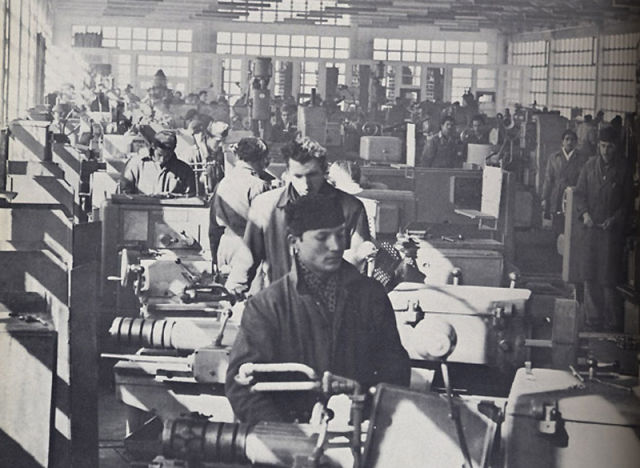
"Sarobi hydro-power plant on Kabul River is one of the country's foremost power stations."
With German assistance, Afghanistan built its first large hydropower station, pictured here, in the early 1950s. At the time, it was state of the art. It is still in operation, but unfortunately, in the last eight years, Afghanistan's government has not been able to build a single large power plant of any kind. The only sizable accomplishment has been the expansion of a transport line to Uzbekistan so that power can be imported from the north.
With German assistance, Afghanistan built its first large hydropower station, pictured here, in the early 1950s. At the time, it was state of the art. It is still in operation, but unfortunately, in the last eight years, Afghanistan's government has not been able to build a single large power plant of any kind. The only sizable accomplishment has been the expansion of a transport line to Uzbekistan so that power can be imported from the north.
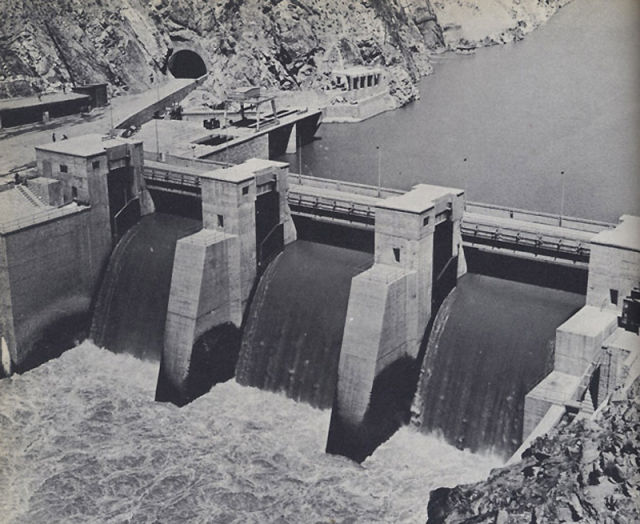
"Gulbahar Textile Plant is one of the most modern in Asia."
When I was growing up, Afghanistan did have medium and light industry, such as the textile factory pictured here. There was a sense then that Afghanistan had a bright future -- its economy was growing, its industry on par with other countries in the region. Back then, most of the cotton processed in a plant like this was grown locally. But three decades of war have destroyed industry and the supply chain.
When I was growing up, Afghanistan did have medium and light industry, such as the textile factory pictured here. There was a sense then that Afghanistan had a bright future -- its economy was growing, its industry on par with other countries in the region. Back then, most of the cotton processed in a plant like this was grown locally. But three decades of war have destroyed industry and the supply chain.
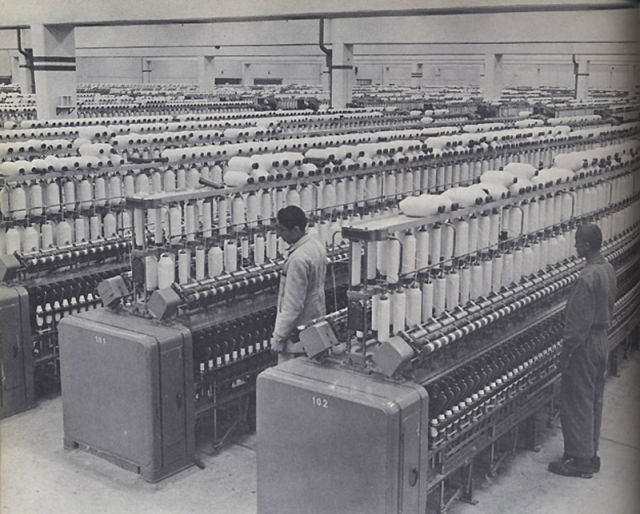
"Kabul is served by an up-to-date transportation system."
Compared with the 1950s and '60s, fewer women work outside the home, and their outfits are much more conservative than what you see here.
Compared with the 1950s and '60s, fewer women work outside the home, and their outfits are much more conservative than what you see here.
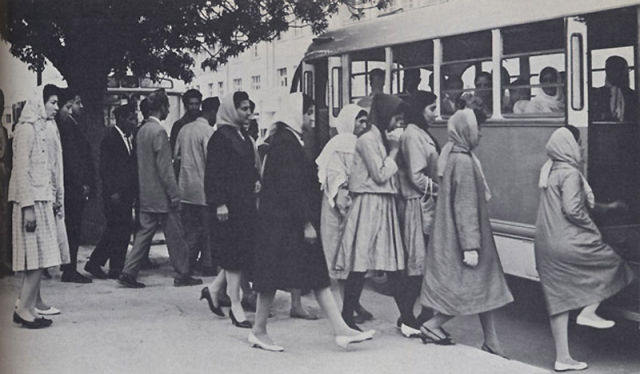
"Central control panel at Radio Kabul transmitter. Transmitter can be heard as far distant as South Africa and Indonesia."
If you flipped through the radio dial in the 1960s, you would hear broadcasts of world news, local news, music programs, funny skits, political discourse, maybe an art program, a children's show. Radio Kabul, a state-run station whose old offices are pictured here, was launched in the 1930s.
If you flipped through the radio dial in the 1960s, you would hear broadcasts of world news, local news, music programs, funny skits, political discourse, maybe an art program, a children's show. Radio Kabul, a state-run station whose old offices are pictured here, was launched in the 1930s.
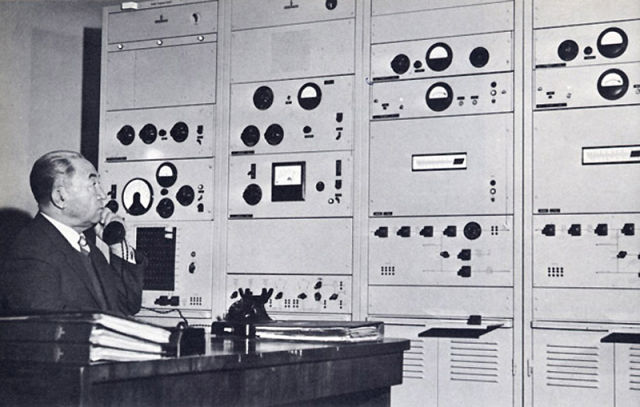

ليست هناك تعليقات:
إرسال تعليق